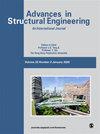Prediction method of TBM tunnel surrounding rock classification based on LSTM-SVM
IF 2
4区 工程技术
引用次数: 0
Abstract
TBM tunnel surrounding rock classification is a key indicator for supporting decision-making and ensuring safe construction. And predicting the surrounding rock type accurately in advance is of great significance for TBM intelligent construction. This paper established the surrounding rock classification model based on support vector machine (LIBSVM), including preprocesses historical tunneling parameters, extracts data information that can accurately reflect the relationship between rock and machine, analyzes the correlation between different parameters and surrounding rock categories, and obtains highly relevant parameters. Based on the long short-term memory (LSTM), the prediction model of total thrust, cutter head torque, gripper pressure, cutter head rotate speed, and propulsion speed are established, which is the strongly correlated parameters with surrounding rock. Combining the parameter prediction model with the surrounding rock classification algorithm, the LSTM-SVM tunnel surrounding rock classification prediction model is established. The results showed that the coefficient of determination of the total thrust model, the cutter head torque, the gripper pressure, the cutter head speed, and the propulsion speed were 0.9825, 0.9396, 0.9974, 0.9843, and 0.9636. The overall prediction accuracy of the surrounding rock category can reach 86.0686%, which can provide a certain reference for predicting the surrounding rock condition in a short distance.基于 LSTM-SVM 的 TBM 隧道围岩分类预测方法
TBM 隧道围岩分类是辅助决策和确保安全施工的关键指标。而提前准确预测围岩类型对于 TBM 智能化施工具有重要意义。本文建立了基于支持向量机(LIBSVM)的围岩分类模型,包括预处理历史掘进参数,提取能准确反映围岩与机器关系的数据信息,分析不同参数与围岩类别的相关性,得到高相关性参数。基于长短期记忆(LSTM),建立了总推力、刀头扭矩、夹持器压力、刀头转速、推进速度等与围岩强相关参数的预测模型。将参数预测模型与围岩分类算法相结合,建立了 LSTM-SVM 隧道围岩分类预测模型。结果表明,总推力模型、刀头扭矩、夹持器压力、刀头速度和推进速度的决定系数分别为 0.9825、0.9396、0.9974、0.9843 和 0.9636。围岩类别的总体预测精度可达 86.0686%,可为短距离围岩状况预测提供一定参考。
本文章由计算机程序翻译,如有差异,请以英文原文为准。
求助全文
约1分钟内获得全文
求助全文
来源期刊

Advances in Mechanical Engineering
Engineering-Mechanical Engineering
自引率
4.80%
发文量
353
期刊介绍:
Advances in Mechanical Engineering (AIME) is a JCR Ranked, peer-reviewed, open access journal which publishes a wide range of original research and review articles. The journal Editorial Board welcomes manuscripts in both fundamental and applied research areas, and encourages submissions which contribute novel and innovative insights to the field of mechanical engineering
 求助内容:
求助内容: 应助结果提醒方式:
应助结果提醒方式:


